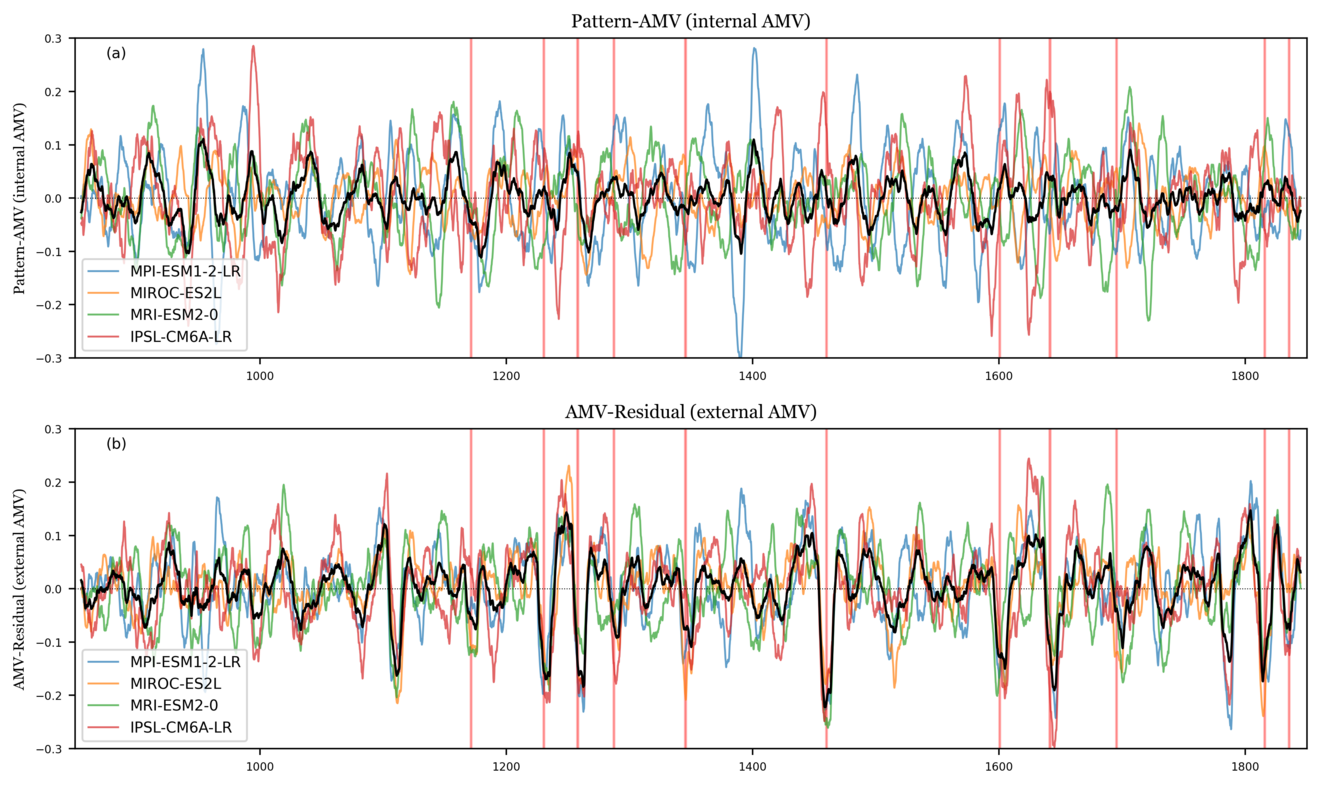A Quantification of Natural Forcing Contributions on Multi-Decadal North Atlantic Temperature Variability over the Past Millennium
The decadal-scale changes of the sea surface temperature over the North Atlantic, which is referred to as Atlantic Multidecadal Variability (AMV), modulates the North Atlantic surface ocean variability and affects regional climate globally.
How natural forcing can affect AMV remains debated. In their study, the authors use a multi-model ensemble of preindustrial millennium simulations (850-1849 CE) — performed in support of the Paleoclimate Modelling Intercomparison Project - Phase 4 (PMIP4) project — to decompose the AMV signal into components associated with internal variability, and external forcing, separately. This decomposition is aided by the analysis of industrial control simulations, which do not include any varying external forcing. This helps identify the spatial pattern of unforced AMV signals, and contrasts with previous analyses based on the temporal structure of variability.The authors find that the internal component of the AMV is insensitive to external forcing, even for strong events such as volcanic eruptions. The forced component of the AMV responds to volcanic eruptions with an immediate radiative cooling followed, in some simulations, by a sequence of damped multidecadal oscillations. The authors also find that the internal component of the AMV is strongly associated with the Atlantic meridional overturning circulation (AMOC), which is part of the global thermohaline circulation. In contrast the AMOC is little influenced by the external component of the AMV. By comparing the preindustrial millennium simulations and the control simulation, the authors estimate that external forcing contributes about 25% of the AMV variance over the past millennium.

Original publication:
Fang, S.-W., Khodri, M., Timmreck, C., Zanchettin, D. & Jungclaus, J. (2021). Disentangling internal and external contributions to Atlantic multidecadal variability over the past millennium. Geophysical Research Letters, 48: e2021GL095990. doi:10.1029/2021GL095990
Contact:
Dr. Shih-Wei Fang
Max Planck Institute for Meteorology
Email: shih-wei.fang@mpimet.mpg.de
Dr. Claudia Timmreck
Max Planck Institute for Meteorology
Email: claudia.timmreck@mpimet.mpg.de
Dr. Johann Jungclaus
Max Planck Institute for Meteorology
Email: johann.jungclaus@mpimet.mpg.de
